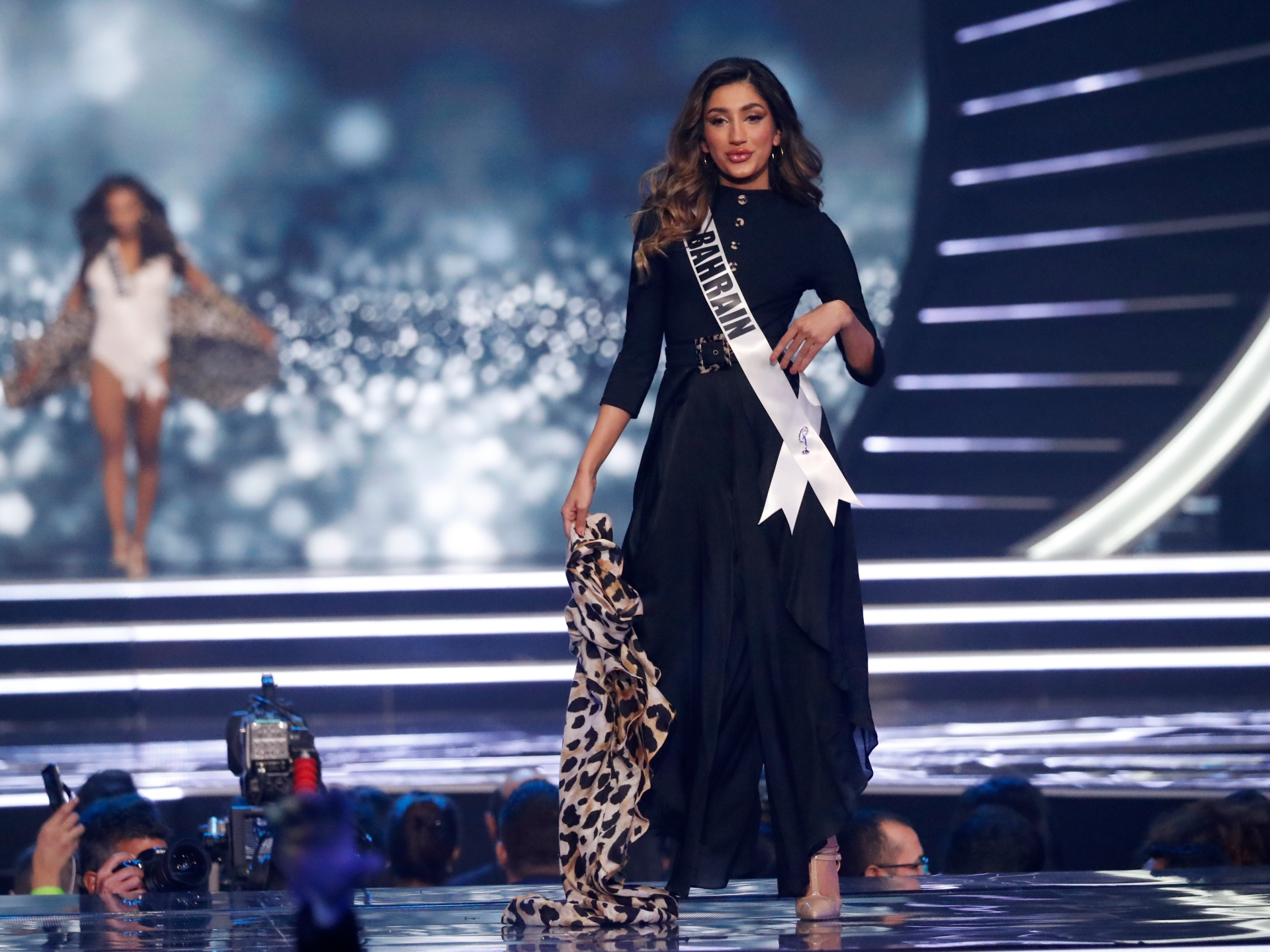Something is not well in the land of sequins and hairspray.
In August, the Miss Universe contest announced that it would expand its pool of eligible contestants to include married women and mothers at its next pageant in 2023, scrapping a 70-year-old rule barring them.
An internal memo announcing the policy change stated: “We all believe that women should have agency over their lives and that a human’s personal decisions should not be a barrier to their success.” The move was welcomed as a nod to inclusivity and a move away from sexist expectations.
Also in August, a Miss England contestant broke with that pageant’s history to become the first to compete barefaced. By ditching makeup, 20-year-old Melisa Raouf said she was “embracing blemishes and imperfections”. This is not the first time that women have tried to defy norms in pageants. Last year in the Miss Universe contest, Miss Bahrain Manar Nadeem Deyani refused to wear a bikini during the swimsuit competition, choosing instead to stay fully covered in a black outfit.
That’s all good, but here’s the harsh truth. Policy adjustments and small acts of rebellion from participants cannot obscure the fact that beauty pageants have become increasingly jarring and out of place in our modern age.
In order to be eligible for Miss Universe, the highest profile beauty pageant internationally, women applying in each country must be between 18 and 28 years old. Contestants are technically judged on three categories: an evening gown, a personality interview and a swimsuit competition. Yet the most important requirement, which is rarely acknowledged in writing nowadays, is that the women must be thin and stereotypically beautiful.
Their skin colour may vary, but amid all the changes and nods to inclusivity, there is still no room for wide noses, disabilities or stretch marks in beauty pageants.
Officially, the Miss Universe organisation would have us believe that beauty is not a requirement at all, let alone the basis of this money-generating enterprise, which earns $5m in annual revenue. It describes itself as a global, inclusive organisation “that celebrates all cultures, backgrounds and religion” and provides participants “with the tools to affect positive change personally, professionally, and philanthropically”.
In other words, a very noble-sounding mission.
Other beauty competitions take their cue from Miss Universe. The tagline for the Miss South Africa pageant, for instance, is similar: “Face your power. Embrace your future.” Nodding to the advancements women have made in society, beauty pageants are quick to remind us that contestants are professionals with careers and ambitions.
However, to watch a revolving door of women be judged based on how well they perform femininity and parade across a stage inevitably feels like stepping back into a distant past in which women were seen but rarely heard.
After all, the expectation that contestants must be childless and unmarried had a fairly explicit historical basis: using pretty and virginal young women as bait to attract business is how beauty pageants started.
In 1920, the owner of the Monticello Hotel in Atlantic City came up with a marketing plot to extend the business season beyond Labor Day in the United States. He sold the idea to fellow businessmen who saw the monetary potential for all of them: How about a parade made up of 350 beautiful maidens to draw tourists? Incidentally, 1920 was also when the 19th Amendment to the US Constitution granted women the right to suffrage, after a century of oftentimes acrimonious feminist campaigning. Subsequent years saw this parade transform into the spectacle that it is today.
Of course, beauty pageants have been trying to remain current in societies that are more likely than before to see women making up the majority of university graduates, breadwinners and world leaders.
A notably misguided attempt to adapt the contest to modern times took place during the Miss Peru 2018 competition. During the swimsuit segment, contestants paraded around the stage in gold bikinis while a massive screen behind them projected newspaper headlines reporting real-life stories of male violence against women. “Man murders woman and her baby”, “Man strangles woman with a cord”, “Stalker stabs pregnant woman, runs away”, “Drunk man beats his wife to death”, and “63 women raped every day” read the headlines while a local artist sang a heart-wrenching song about female empowerment.
Clearly troubled by its awkward place in the modern world, the contest tried to present itself as alive to the Latin American and Caribbean regional awakening against male violence targeting women, otherwise known as the “Ni Una Menos” movement.
At the end of the day, though, these superficial policy changes represent marketing strategies that have an expiration date. These must surely be indicators that organisers know the future of beauty pageants is untenable.
Viewership for Miss Universe contests worldwide has been steadily declining for decades. Disinterest from the public is the clearest sign that this archaic institution and its hundreds of offshoots — where women are presented to be ogled at and discarded one by one — have overstayed their welcome.
No amount of lipstick or makeup will change that. It is time to abolish them.
The views expressed in this article are the author’s own and do not necessarily reflect Al Jazeera’s editorial stance.
